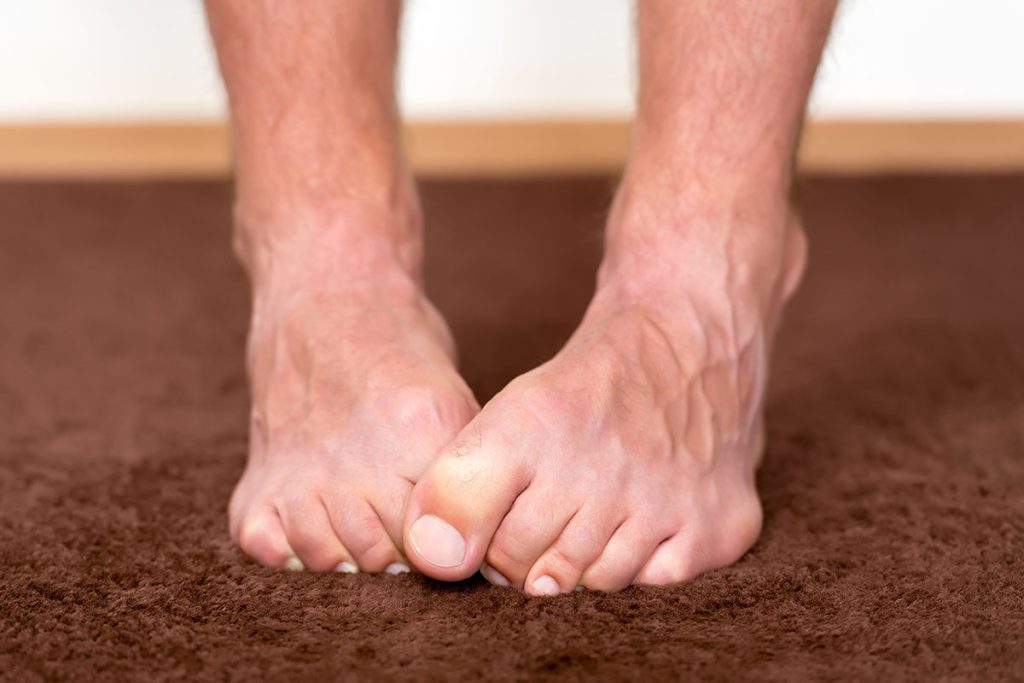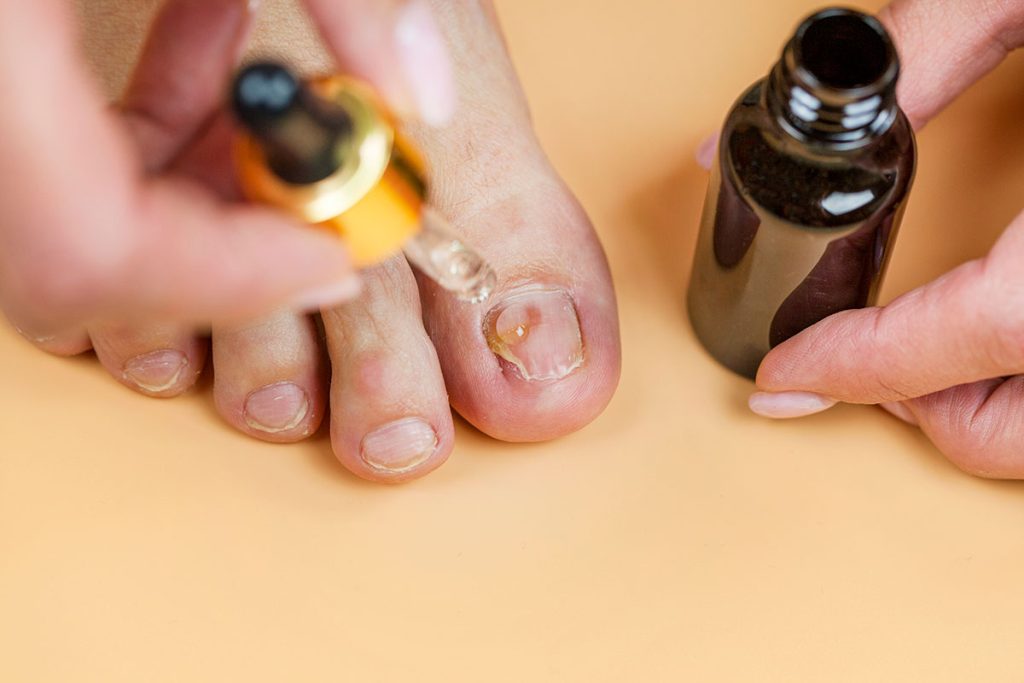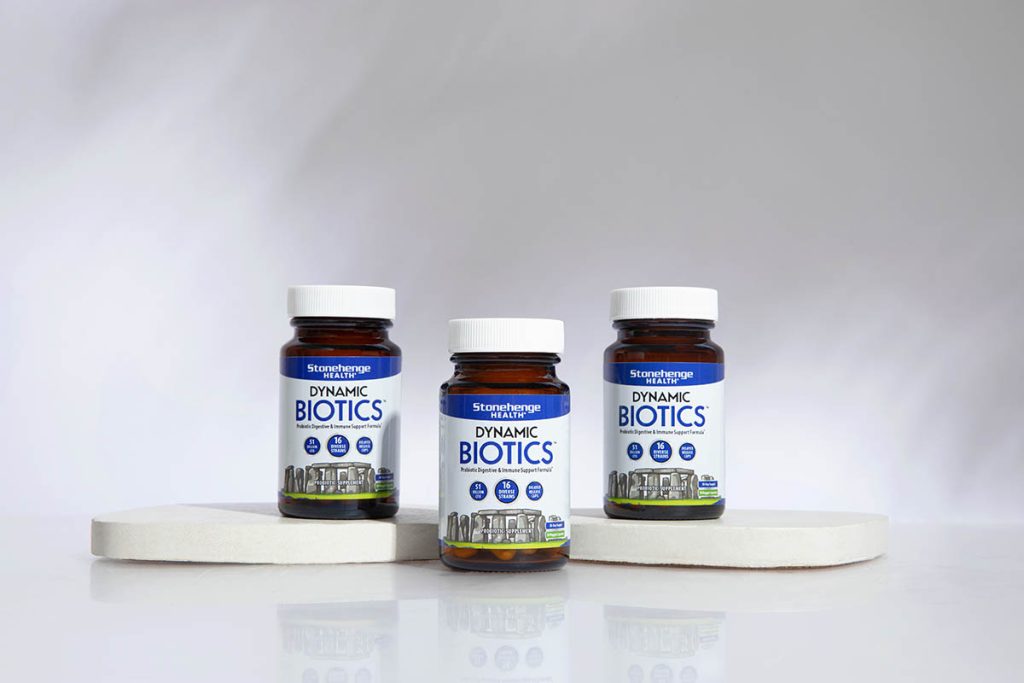
Sandals with socks, year-round boots, or just a general avoidance of letting your toes out in public…
These are a few of the many ways in which people with thick, discolored toenails may choose to hide this condition. And it’s worth talking about because there are two serious issues at play here:
1. The psychological impacts of shame or feeling embarrassed
2. The underlying causes and health issues of toenail discoloration and/or shape
The first issue is simple to solve:
Never be ashamed of your body for any cause, but especially those outside your control.
But luckily for you, there are certain measures you can take to address thick or discolored toenails.
But before we get to those, let’s quickly explain some of the most common causes of discolored and misshapen toenails.
Most Common Causes of Thick or Discolored Toenails

Here are a few of the primary causes of toenail funk:
• Fungal infections (Onychomycosis): This is the most common cause of thick, discolored toenails. Fungi thrive in warm, moist environments, making the toenails especially susceptible to infection. The infection can cause the nail to become yellow, brown, or white, and the nail may thicken and crumble.
• Psoriasis: A skin condition that can also affect the nails, causing them to grow abnormally. Nails may become thick, pitted, discolored, and separated from the nail bed.
• Dermatophyte infections: A specific type of fungus that affects the skin, hair, and nails. Similar to onychomycosis, it can lead to thickening and discoloration of the toenails.
• Nail trauma: Injury to the toenail can cause it to become thick and discolored as it heals. Repeated trauma, such as from running or tight shoes, can lead to chronic changes in the nail’s appearance.
• Aging: As people age, their toenails can naturally become thicker and more brittle, which may also lead to discoloration.
• Poor circulation: Conditions that affect blood flow to the feet, such as diabetes and peripheral arterial disease, can lead to changes in toenail color and thickness.
• Bacterial infections: While less common, bacterial infections can also cause changes in nail color and thickness.
As we discussed earlier, the majority of these causes aren’t really anything to be worried about from a health perspective and can be managed with various treatments. There is a slight possibility, however, that issues like a weak immune system may be allowing some of these infections to become worse than they need to be.
How to Treat Discolored or Thick Nails

First, it is always best to consult with your physician before taking any action to remedy toenail issues. He or she will be able to provide the best course of action, as well as be a sounding board for your own home remedies.
That said, let’s look at a few remedies for discolored nails.
Medical Intervention

If you’ve been diagnosed with a condition like Onychomycosis—a fungal infection of the toenails—you’ll likely be prescribed a topical and/or oral antifungal medication like ciclopirox or terbinafine.
If the treatment is unsuccessful or unsatisfactory, more extreme options include nail removal or laser and photodynamic therapy. These treatments are usually considered when other treatments have failed, but more research is needed to determine their efficacy fully.
Natural Remedies with Probiotics

Probiotics are beneficial bacteria that can play a role in maintaining or improving gut health, and they might have indirect effects on overall health, including skin and nail conditions. While there’s no direct evidence that probiotics can treat thick, discolored toenails, they might contribute to better health outcomes in a few indirect ways:
• Boosting your immune system: Probiotics can help strengthen the immune system. A robust immune system is better equipped to fight off infections, including fungal infections that cause toenail problems.*
• Balancing your microflora: By balancing the body’s microflora, probiotics might help prevent the overgrowth of harmful fungi and bacteria in the body, potentially reducing the risk of fungal infections that can lead to toenail issues.*
• Reducing your inflammation: Some probiotics have anti-inflammatory properties. While inflammation is not a direct cause of fungal nail infections, reducing systemic inflammation can contribute to a healthier immune response, possibly impacting the body’s ability to manage and prevent infections.*
Next Steps

Stonehenge Health Dynamic Biotics is a diverse mix of 16 strains of probiotics with 55 Billion CFUs (Colony Forming Units), plus a prebiotic fiber combination of NutraFlora® FOS (Fructooligosaccharide) and inulin to support your gut health by maintaining a healthy population of gut flora, helping ‘crowd out’ undesirable bacteria.*
If you’re curious about natural remedies, boosting your immune system, and nourishing the growth of beneficial gut microbes to promote digestive health,* consider exploring Dynamic Biotics.















